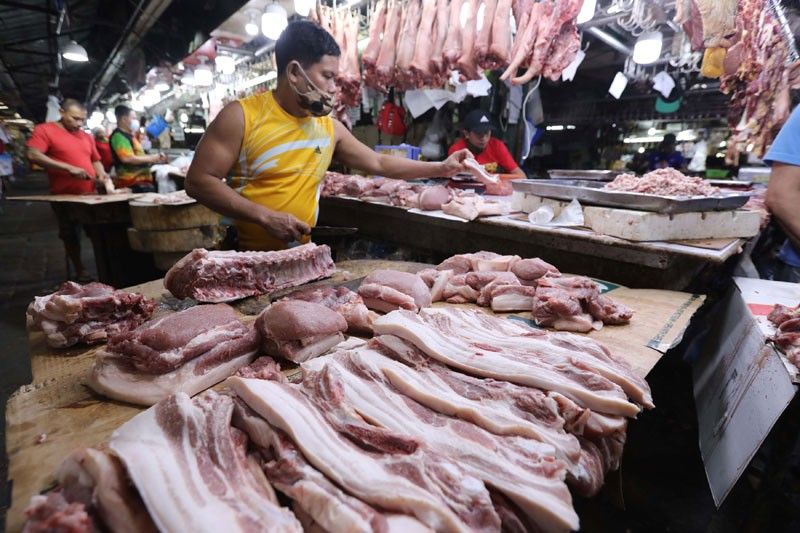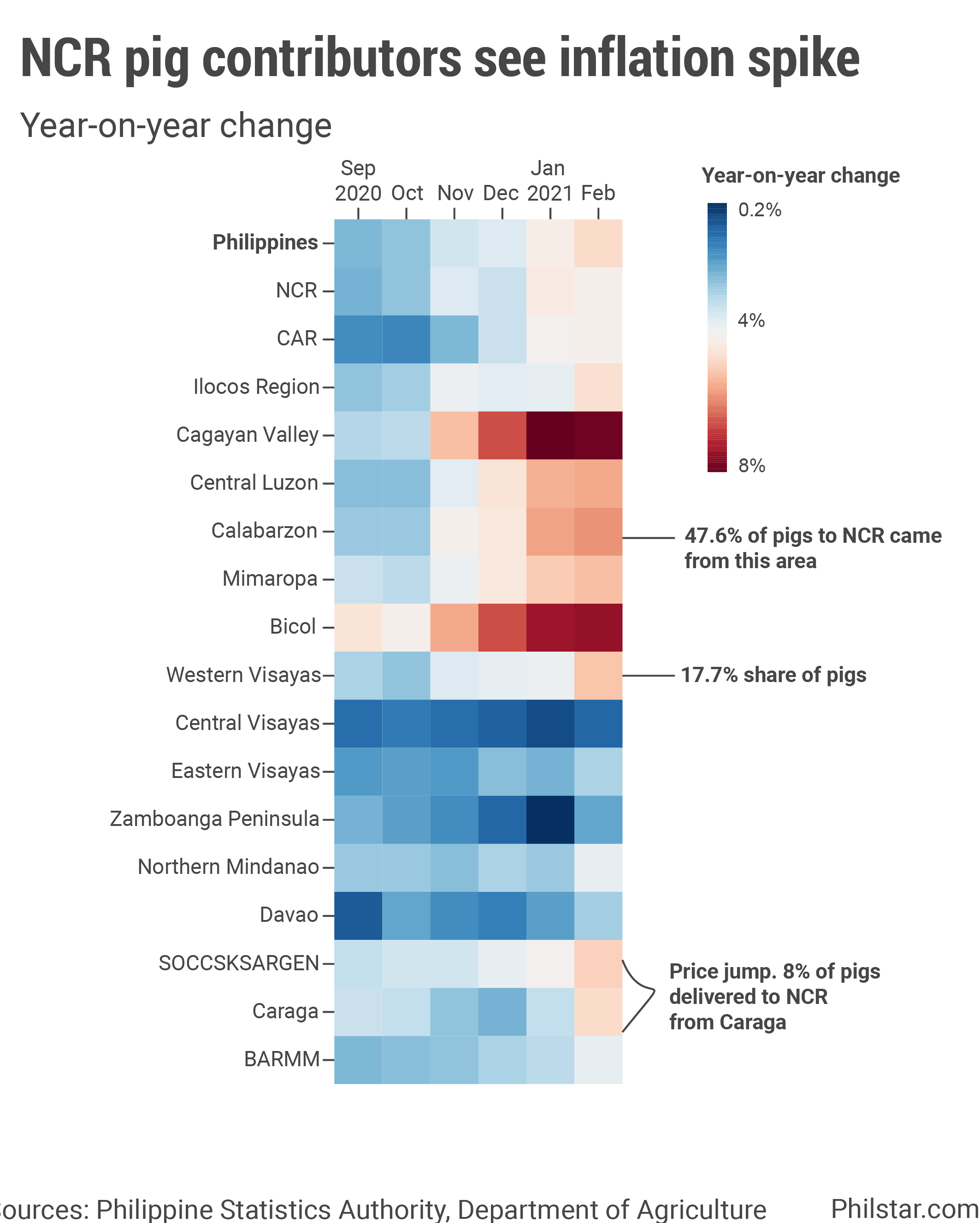Pigs from provinces slowed Manila inflation. Now these areas see prices soar

MANILA, Philippines — When Metro Manila’s pork shortage was driving up prices, the government’s immediate fix was to ask provinces to send some of their pigs to the capital for replenishment. Now, these areas are seeing their own inflation spike.
On average, meat prices outside the National Capital Region (NCR) accelerated by 20.8% year-on-year in February, up from 15.9% a month ago, data from the Philippine Statistics Authority showed.
Worse, meat costs are now rising faster in the provinces than in Metro Manila. Last month, prices of the same products went up 20.4% annually in NCR, down from 21.6% in January.
These figures showed that while a direct correlation between pork deliveries to NCR and tightening supply outside the capital may not be directly established, they are, to say the least, contributory factors to quickening inflation on the biggest hog contributors to Metro Manila’s supply.
For instance, the neighboring area of Calabarzon accounted for 47.6% of the 753,217 kilograms of live pigs sent to Metro Manila for sale and consumption of residents there. In February, Calabarzon’s inflation hit 5.8% from January’s 5.6%.
Down south, what were once areas where inflation was contained have now seen prices beyond surge. Caraga, which was responsible for 8.45% of pigs delivered to NCR as of March 4, posted an inflation of 5.8% from January’s 3.1%. That rate was so fast that inflation for that month already breached the central bank’s full-year goal of 2-4%.
It was a similar story in Western Visayas. That region, which early last year saw crop damage from typhoons pushing up prices, suffered an inflation of 5.1% last month from just 3.8% previously.

A day before the inflation report was released, the agriculture department denied the agency’s strategy is hurting the provinces where meat is sourced, even if some of them are now also reeling from a typhoon last month.
“We were in the Zamboanga Peninsula recently. Areas affected around Surigao del Sur produced rice, it’s not a hog-producing area,” Assistant Secretary Noel Reyes said in a briefing on Thursday.
In total, the government estimated that the Philippines is short this year of 400,000 metric tons of pork, the country’s main source of protein, and most of the shortage is in the most-dense area of Metro Manila.
This assessment prompted the local pork shipments while awaiting for President Rodrigo Duterte to sign an executive order (EO) that would permit more pork imports from abroad to augment supply. The problem is the EO cannot be signed while Congress is in session because the draft order also lowers tariffs for pork to incentivize shipments.
By law, tariffs may only be tinkered with by the Executive department when legislators are on break. Otherwise, any change would have to go through the more tedious enactment of a bill. That means the permanent fix to the problem of more imports would have to wait until March 27, a day after the current session is suspended.
For now, Reyes said the government would continue sending pork from the provinces to Manila. Asked if that will continue even once tariffs are reduced and imports are finally hiked, Reyes said in a text message: “We believe so.” — with Prinz Magtulis
- Latest
- Trending




























